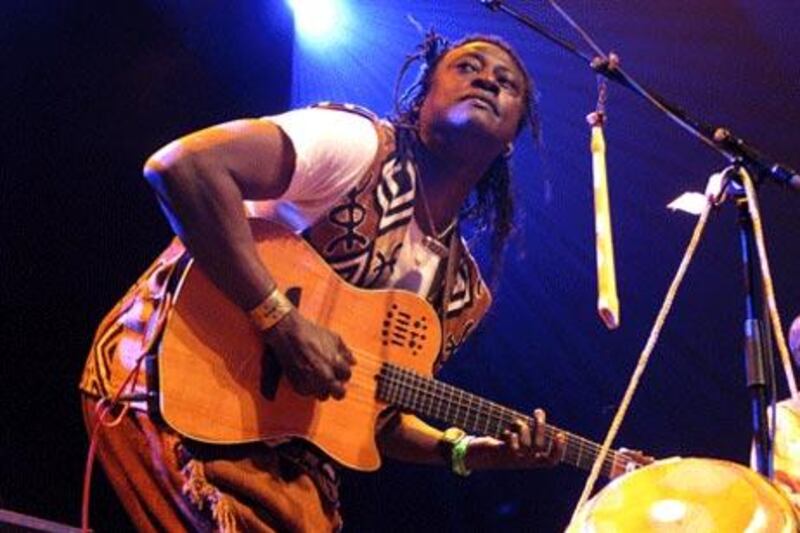Mali is one of the poorest countries on Earth. It ranks 82nd of the 104 countries listed on the recent Legatum prosperity index. It has 30 per cent unemployment, next to no technological infrastructure and a health-adjusted life expectancy of 38 years. One respect in which it is almost unfathomably wealthy, however, is in the richness and diversity of its folk music. It would be grotesque to propose that one is any sort of compensation for the other, so let's not. Merely marvel at the fact that so many of the African musicians to achieve international prominence over the past 30 or so years gave come from this nation: Ali Farka Touré, Tinariwen, Rokia Traoré, Amadou & Mariam, Oumou Sangaré and Boubacar Traoré, all of whom you should race to investigate if you haven't already.
The list goes on, and one very interesting place it goes is Habib Koité, a man who has made it his mission both to encompass Mali's many musical traditions and, in so doing, transcend them. He's a hereditary griot, which is to say a torchbearer for Mali's Mandean bardic tradition. He's also an eclectic music scholar: a classically trained guitarist raised on an early diet of Pink Floyd and Jimi Hendrix. His playing is fluent, lyrical and dexterous. ("I would drink your sweat," a dazzled Bonnie Raitt once told him.) More interesting, however, is the way that it travels around Koité's homeland borrowing elements from a dozen different folk styles and musical languages. He's like a walking Baedeker of Malian music, a ethnomusicological spotters' guide for melodic themes and rhythmic devices. He's playing in Abu Dhabi on Thursday, and I wouldn't miss it for the world.
His trip just might overlap with that of the virtuoso violinist Anne-Sophie Mutter, who is performing at Emirates Palace a couple of days later. Would it be naff to speculate on what a collaboration between the two of them might sound like? Koité, after all, could meet Mutter on her home turf, perhaps joining her in a Paganini duet. Even just a spot of improvisation would be acceptable. Somehow, I don't imagine open-ended jamming is Mutter's thing, but it would be a thing to hear, you must admit. Then again, Mutter is always a thing to hear and the programme for her concert this week ought to supply confirmation enough of that. We'll get to hear three piano trios, with Mozart, Mendelssohn and Previn representing the 18th, 19th and 20th centuries respectively.
There are also a few art shows this week that you won't want to overlook. Ritual Imprint is the latest collection by the Iranian artist Pouran Jinchi, and it comes to the Third Line on Friday. Jinchi specialises in rubbings of prayer stones which she embellishes with calligraphy and geometric designs. The results are meditative beautiful. Meanwhile Farzan Sadjadi is back at Carbon 12 with more grimly comic scenes of war. Remember the version of Goya's Disasters of War that the Chapman brothers produced a couple of years ago, where the prisoners and executioners were given clown faces? Sadjadi's work looks nothing like that, but it has a similar spirit. And it opened last week, but you might still want to catch Human Race, Binu Bhaskar's exhibition at Mojo. The Australian photographer toured the world looking for recurring patterns in major metropolises. From Melbourne to Madrid, Mumbai to Dubai, see him fit the pieces together. Ritual Imprint - Pouran Jinchi Thursday, February 25 The Third Line Gallery, Al Quoz, Dubai Between a Rock and a Hard Place`` - Farzan Sadjadi Tomorrow - February 20 Carbon 12 Gallery Al Quoz, Dubai The Human Race - Binu Bhaskar until February 24 Mojo Gallery Al Quoz, Dubai





